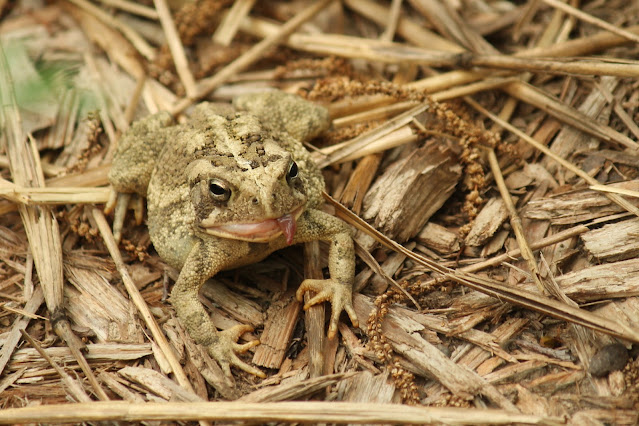Just a little over a year ago I wrote a post titled "To till, or not to till: I think I'll try not to." And after my first year of no-till, I know one thing for sure...I'll never go back to my old way of gardening.
To be clear, I can't say that my no-till garden has been a huge success - quite the opposite actually. I don't think I got what I'd call a real harvest from anything until late summer. But when I walk through the garden now, it just seems "right."
I began the transition to no-till by building raised rows in the "good" part of the garden. I raked up the old straw mulch and shoveled dirt on top of that. Cardboard topped with cypress mulch covered the walking space in between the rows. Over the next few months, I slowly added more rows and by early spring the east part of the garden was pretty much complete. I started planting.
So what are the positives about no-till?
First, I love being able to take my seeds and little transplants out to the garden and just plant them without having to worry about getting the tiller out of the shop.
Second, between the cardboard and cypress mulch in the walking rows, and the straw mulch on the sides of the raised rows, there were hardly any weeds, and what weeds or grass did pop up were easily pulled out by hand. The exception to the "hardly any weeds" were prostrate sandmat (Euphorbia prostrata) and common yellow woodsorrel (Oxalis stricta). But since both of those are very low-growing, I just left them. (I may regret that next spring.)
Third, it seemed like there was just more "life" in the garden than there was when I was keeping it tilled. Until the weather turned off hot and dry, there were always earthworms and other little soil-dwelling critters under the mulch. That meant there were toads living in the garden too. And because I interplanted different kinds of flowers in with the food crops, there were bees, butterflies, wasps, and syrphid flies. When the sunflowers set their seeds, there were goldfinches and chickadees hanging upside down plucking seeds from the seed heads.
 |
| A Fowler's Toad (Anaxyrus fowleri) hunting in one of my walking rows. |
What were the negatives?
I don't think there were any real negatives that weren't caused by something stupid that I did. But I did learn a few things from my mistakes, and will try to correct them and know better what not to do next year.
First, my raised rows were too steep. As a result, when I tried to water them, the water didn't have a chance to soak in - it just ran down the sides into the walking rows. (...and in some cases, taking my seeds with it. I had quite a few carrots growing at the edge of the walking rows!) The rows will need to be reshaped this winter so that they are flattened out, but with the sides slightly higher than the center so they hold the water until it can soak in.
Second, my raised rows went all "hollow" underneath. Best I can figure out is that the straw underneath has decayed, leaving a big void under the top couple of inches of soil. For whatever reason, the rows haven't collapsed, but when I tried to set out my beet transplants this fall, every hole that I tried to "dib" punched through the top crust into a big empty space. So when I'm reshaping the rows, I'll need to break that top layer so that it collapses down into the void below. The decaying straw might also explain why some of my plants didn't look as healthy as I thought they should. There might have been some nitrogen tie-up going on.
I really can't think of anything else to list as a "negative" of no-till. If something else comes to mind later I will edit this post to add it.